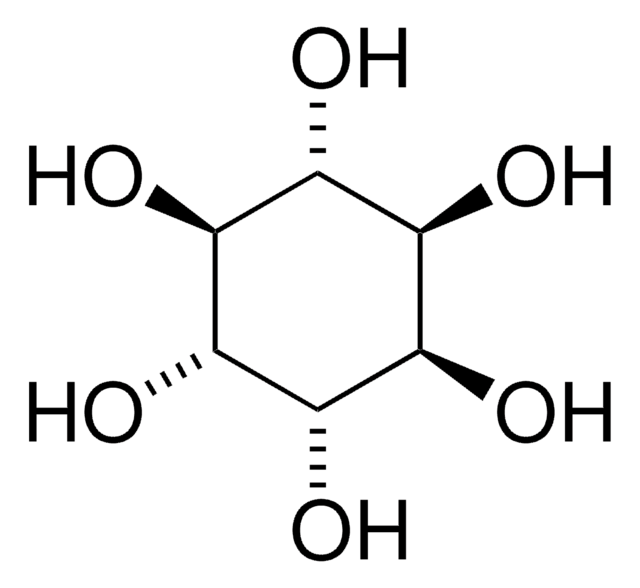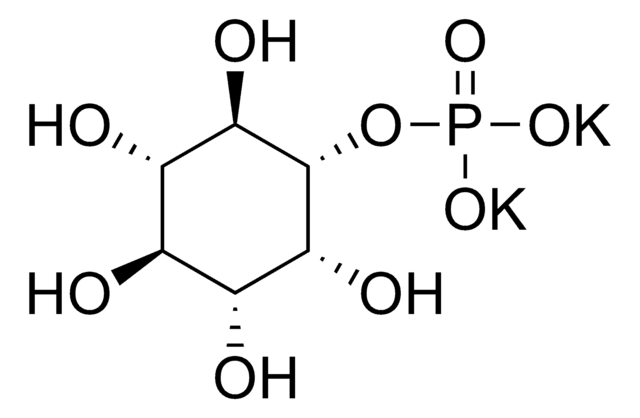I5125
myo-Inositol
≥99% (GC), powder, precursor of membrane phospho-inositides and phospholipid
Synonym(s):
1,2,3,4,5,6-Hexahydroxycyclohexane, i-Inositol, meso-Inositol
About This Item
Recommended Products
product name
myo-Inositol, ≥99%
vapor density
6.2 (vs air)
Quality Level
Assay
≥99%
mp
222-227 °C (lit.)
solubility
H2O: 50 mg/mL
SMILES string
O[C@H]1[C@H](O)[C@H](O)[C@H](O)[C@@H](O)[C@@H]1O
InChI
1S/C6H12O6/c7-1-2(8)4(10)6(12)5(11)3(1)9/h1-12H/t1-,2-,3-,4+,5-,6-
InChI key
CDAISMWEOUEBRE-GPIVLXJGSA-N
Looking for similar products? Visit Product Comparison Guide
General description
Application
- as a standard for monosaccharide analysis by gas-liquid chromatography (GC)
- as a component of R-free seahorse media for cultivation of peritoneal macrophages (PMΦs) to study cellular glycolytic metabolism
- as a SOFaaci media supplement for extending in vitro embryo growth
- as a component of α minimum essential medium (αMEM) complete media to culture natural killer (NK) cell line
Biochem/physiol Actions
Storage Class Code
11 - Combustible Solids
WGK
WGK 3
Flash Point(F)
Not applicable
Flash Point(C)
Not applicable
Personal Protective Equipment
Certificates of Analysis (COA)
Search for Certificates of Analysis (COA) by entering the products Lot/Batch Number. Lot and Batch Numbers can be found on a product’s label following the words ‘Lot’ or ‘Batch’.
Already Own This Product?
Find documentation for the products that you have recently purchased in the Document Library.
Customers Also Viewed
Articles
Discover Bioactive Small Molecules for Lipid Signaling Research
Our team of scientists has experience in all areas of research including Life Science, Material Science, Chemical Synthesis, Chromatography, Analytical and many others.
Contact Technical Service



